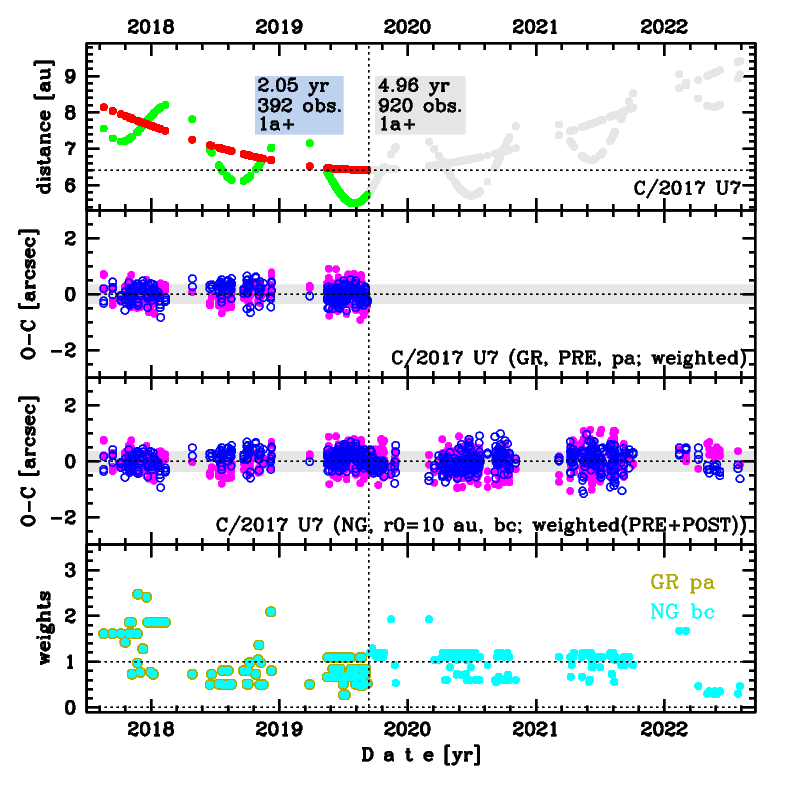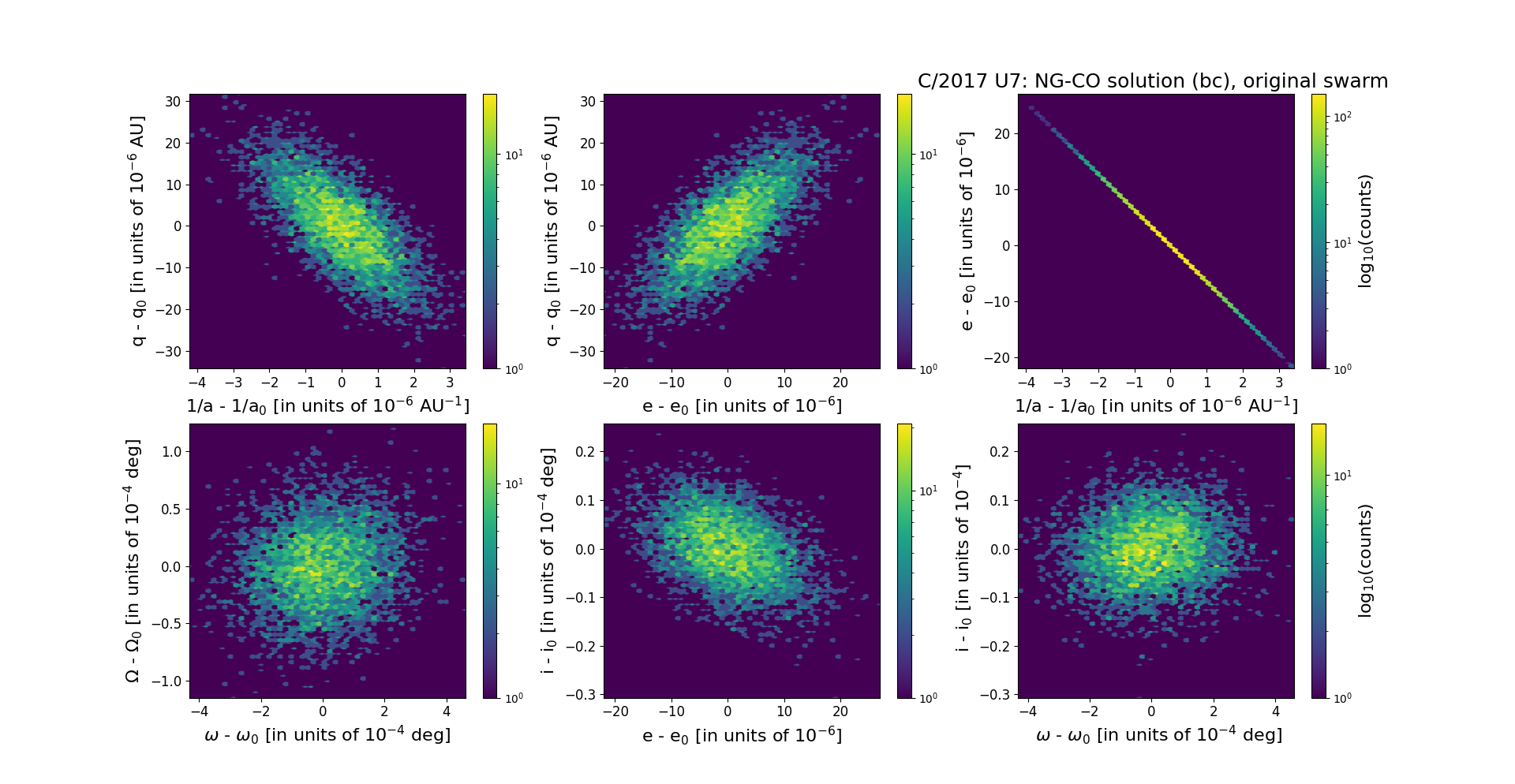C/2017 U7
more info
Comet C/2017 U7 was discovered on 29 October 2017 with the Pan-STARRS 1 telescope (Haleakala), that is almost 2 years before its perihelion passage. Several prediscovery images of this comet were found: taken by the same survey from 18 August and 13 September 2017. This comet was observed until 3 August 2022.
Comet had its closest approach to the Earth on 1 August 2019 (5.493 au), less than 1.5 months before its perihelion passage.
The preferred solution given here is based on data spanning over 4.96 yr in a range of heliocentric distances from 8.14 au – 6.42 au (perihelion) – 9.41 au.
This near-parabolic comet (original semimajor axis around 8,000–9,000 au) suffers small planetary perturbations during its passage through the planetary system that likely lead to escape the comet from the planetary zone on a hyperbolic orbit (see future barycentric orbits).
#********************************** update of 'Oort spike' comets 2016 - 2020, comet no 5; Oort spike comet
Comet had its closest approach to the Earth on 1 August 2019 (5.493 au), less than 1.5 months before its perihelion passage.
The preferred solution given here is based on data spanning over 4.96 yr in a range of heliocentric distances from 8.14 au – 6.42 au (perihelion) – 9.41 au.
This near-parabolic comet (original semimajor axis around 8,000–9,000 au) suffers small planetary perturbations during its passage through the planetary system that likely lead to escape the comet from the planetary zone on a hyperbolic orbit (see future barycentric orbits).
#********************************** update of 'Oort spike' comets 2016 - 2020, comet no 5; Oort spike comet
| solution description | ||
|---|---|---|
| number of observations | 920 | |
| data interval | 2017 08 18 – 2022 08 03 | |
| data type | perihelion within the observation arc (FULL) | |
| data arc selection | entire data set (STD) | |
| range of heliocentric distances | 8.14 au – 6.42 au (perihelion) – 9.41 au | |
| type of model of motion | NC - non-gravitational orbits for symmetric CO-g(r)-like function | |
| data weighting | YES | |
| number of residuals | 1781 | |
| RMS [arcseconds] | 0.34 | |
| orbit quality class | 1a+ | |
| orbital elements (barycentric ecliptic J2000) | ||
|---|---|---|
| Epoch | 1710 09 14 | |
| perihelion date | 2019 09 13.17967185 | ± 0.00149526 |
| perihelion distance [au] | 6.41007929 | ± 0.00000917 |
| eccentricity | 0.99922161 | ± 0.00000688 |
| argument of perihelion [°] | 326.122512 | ± 0.000129 |
| ascending node [°] | 276.185062 | ± 0.000032 |
| inclination [°] | 142.650176 | ± 0.000006 |
| reciprocal semi-major axis [10-6 au-1] | 121.43 | ± 1.07 |
| file containing 5001 VCs swarm |
|---|
| 2017u7bc.bmi |

Upper panel: Time distribution of positional observations with corresponding heliocentric (red curve) and geocentric (green curve) distance at which they were taken. The horizontal dotted line shows the perihelion distance for a given comet whereas vertical dotted line — the moment of perihelion passage.
Middle panel(s): O-C diagram for a given solution (sometimes in comparison to another solution available in CODE), where residuals in right ascension are shown using magenta dots and in declination by blue open circles.
Lowest panel: Relative weights for a given data set(s).
Middle panel(s): O-C diagram for a given solution (sometimes in comparison to another solution available in CODE), where residuals in right ascension are shown using magenta dots and in declination by blue open circles.
Lowest panel: Relative weights for a given data set(s).
